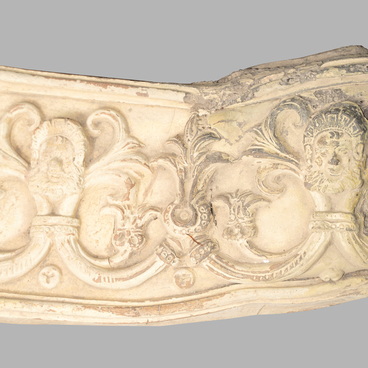The old photograph depicts a tea party of the Glitch family from Sarepta, a German settlement on the Volga River. Albert Glitch, a bearded man looking into the camera lens, is resting on the veranda in a circle of loved ones. Glitch was the owner of a mustard plant in Sarepta. He continued the family’s business by expanding the mustard markets in Russia and abroad.
Adaptation to the conditions of the Lower Volga region played an important role in the taste preferences of the German settlers in Russia. Gradually, the settlers who were plunged into the new natural and economical conditions learned to use the available Russian products and components. For example, they made a drink from chicory and cereals instead of natural coffee, they drank Kalmyk tea with milk and salt or ‘steppe tea’ from herbs and roots instead of China tea.
The samovar also entered everyday life and became an integral part of the family pastime of the inhabitants of Sarepta. In summer, it was customary in the town to drink tea on the verandas or on the porches at a tea table with a samovar.
In addition, the Sareptans made fruit drinks, compotes, juices, and cooked jelly. Red or white table dry wine, Madeira, liqueurs were moderately served on public holidays. They also drank fresh milk, brewed barley and watermelon beer. They quenched their thirst with spring water from the Sarepta water supply line.
The genuine coffee, usually with milk, was drunk mainly by wealthy settlers. Coffee was brought from fairs from St Petersburg and Moscow; most often it was imported one such as Turkish or Arabic and was quite expensive. Sugar to put in coffee or tea was even more expensive.
Therefore, cheap teas and coffee drinks, so called ersatz coffee, were popular among the settlers of average income up to the beginning of the 20th century. The ersatz or substitute concept came from Germany, where butter was replaced with margarine, while sugar was with saccharin, and coffee was with chicory during the First World War due to a dramatic shortage of food.
The diet of the Volga Germans differed from the traditional diet of Russian peasants. Unlike the latter, who cooked hot meals once a day, German housewives heated the stove and cooked hot food three times a day.
Before eating, the Sareptians stood up to pray. The inhabitants of Sarepta were the Hernguters who were representatives of the Protestant movement. The Hernguters were characterized by a focus on prayer and community living.
Adaptation to the conditions of the Lower Volga region played an important role in the taste preferences of the German settlers in Russia. Gradually, the settlers who were plunged into the new natural and economical conditions learned to use the available Russian products and components. For example, they made a drink from chicory and cereals instead of natural coffee, they drank Kalmyk tea with milk and salt or ‘steppe tea’ from herbs and roots instead of China tea.
The samovar also entered everyday life and became an integral part of the family pastime of the inhabitants of Sarepta. In summer, it was customary in the town to drink tea on the verandas or on the porches at a tea table with a samovar.
In addition, the Sareptans made fruit drinks, compotes, juices, and cooked jelly. Red or white table dry wine, Madeira, liqueurs were moderately served on public holidays. They also drank fresh milk, brewed barley and watermelon beer. They quenched their thirst with spring water from the Sarepta water supply line.
The genuine coffee, usually with milk, was drunk mainly by wealthy settlers. Coffee was brought from fairs from St Petersburg and Moscow; most often it was imported one such as Turkish or Arabic and was quite expensive. Sugar to put in coffee or tea was even more expensive.
Therefore, cheap teas and coffee drinks, so called ersatz coffee, were popular among the settlers of average income up to the beginning of the 20th century. The ersatz or substitute concept came from Germany, where butter was replaced with margarine, while sugar was with saccharin, and coffee was with chicory during the First World War due to a dramatic shortage of food.
The diet of the Volga Germans differed from the traditional diet of Russian peasants. Unlike the latter, who cooked hot meals once a day, German housewives heated the stove and cooked hot food three times a day.
Before eating, the Sareptians stood up to pray. The inhabitants of Sarepta were the Hernguters who were representatives of the Protestant movement. The Hernguters were characterized by a focus on prayer and community living.



